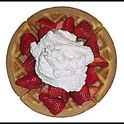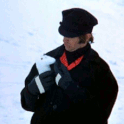Why use a roasting rack when roasting meat? What would I be missing out on if not using one?
5 Comments
ChefOnoJune 23, 2013
One classic method substitutes a layer of mirepoix in lieu of a rack. My preference is a "V" rack which allows the drippings to develop flavor in the bottom of the pan for subsequent saucemaking.
(FWIW, water would hold the temperature in the bottom of the pan to 212F, well below that required for an efficient Maillard reaction. No Maillard = No Complex Flavors = Unhappy Chef!)
GreenstuffJune 22, 2013
Agree with all above, but don't let not having a rack stop you from roasting. I have several but do not use them all the time.
pierinoJune 22, 2013
I don't use the water method but the rack does give you better heat/air circulation. It also makes it easier to baste evenly.
katiaDJune 22, 2013
I usually roast on a rack to avoid the excess fat on the meat.i put water on the base of the tray,cover the tray with the meat the half time of cooking it and removing it only half hour before I turn the oven off to give color to the meat.that way it is cooked with the help of water and in a way more healthy.another reason I put water is to because I use it to make sauce since it already has all the flavors of the meat plus the right fat (I don't add any fat or oil in that)
WannabeBakerJune 22, 2013
I use a roasting rack because it keeps my meet lifted out of the juices, which I find can keep the bottom from getting nice and crispy, especially if I'm roasting a whole chicken with the skin still on. I imagine (although am not sure) that it also allows the heated air to properly move around all over the meat and make sure the bottom gets cooked well, too.
Showing 5 out of 5 Comments
Recommended by Food52
Popular on Food52
Continue After Advertisement


